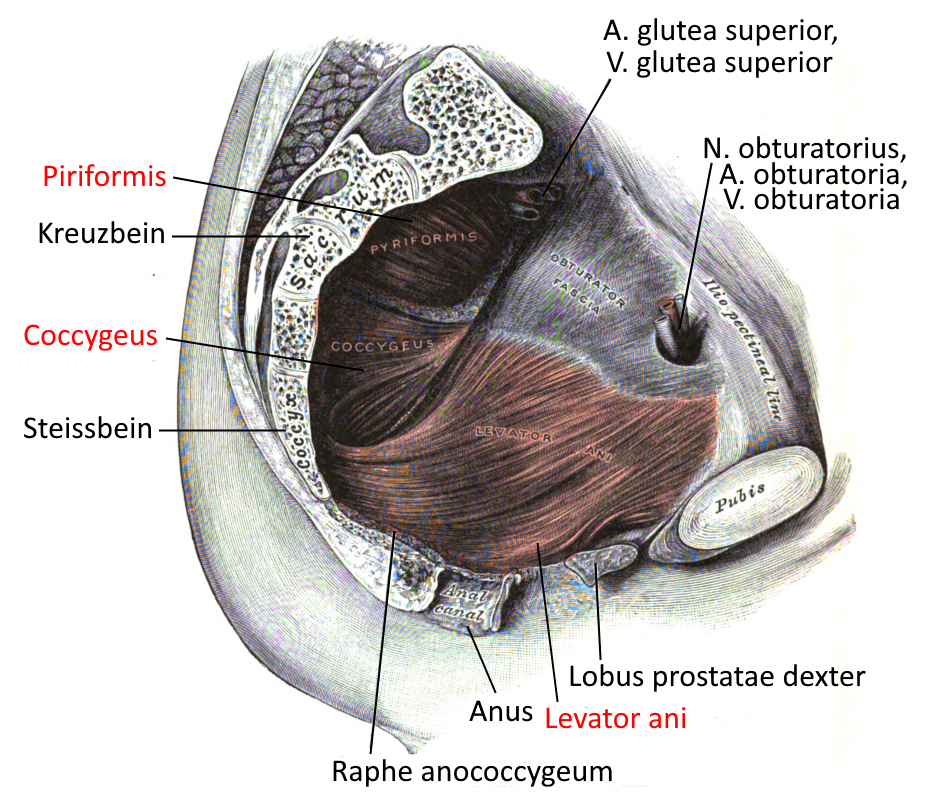yogabook / muscles / levator ani
Bild: Levator ani im Kontext

Levator ani
The levator ani is an almost transverse V-shaped muscle plate that runs from dorsal to ventral on both sides and forms the main part of the pelvic diaphragm, the cranial layer of the pelvic floor. The V leaves out openings for the rectum, vagina (w) and urethra. It can be subdivided into several parts:
- Pubococcygeus muscle: runs from the bilateral origin of the puborectalis muscle to the anococcygeal ligament and coccyx.
- Puborectalis muscle: Pulls from both sides lateral to the symphysis as a sling around the rectum (anorectal junction)
- Musculus iliococcygeus: runs laterally from the fascia of the M. obturatorius internus to the coccyx.
- Pubovaginalis muscle (woman)
- Musculus levator prostatae (man)
It is used for defecation by lifting the flexura sacralis of the rectum and is important for faecal and urinary incontinence. When contracted, it increases intra-abdominal pressure (abdominal pressure). At rest, it closes the levator gate with a basal tone and contributes to continence. In females, the levator ani is more strongly interspersed with connective tissue and the bilateral levatores ani muscles lie against the vagina to enable its voluntary contraction. In men, the puborectal part is more pronounced. Its insufficiency can lead to descent (descensus) or evenprolapse of the vagina and also the uterus, which is made more likely by a rupture of the puborectalis, which is not uncommon in vaginal births. Pelvic floor training is an important conservative measure against this. However, if the levator ani muscle tears off (in up to 30% of first-time mothers), it is permanently inadequate. There is still no recognized surgical method for reconstruction. In men, prostate resections can lead to damage to the levator ani. In addition, pelvic floor hernias can occur in both sexes in areas where the muscles are weak.
